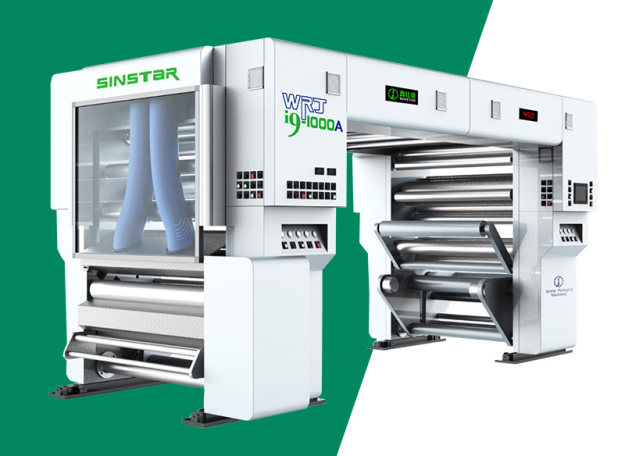Two Types Of Solventless Laminating MachinesPosted by jessie on April 21st, 2021
Solventless lamination is a method of compositing two or more substrates by using a solvent-free adhesive. The solventless lamination machine is mainly composed of two major parts including the solventless laminator and adhesive mixer. It mainly completes the operation of the unwinding, tension control, glue, composite and rewind. The adhesive mixer is a special device for quantifying the adhesive to the host. Here, we mainly introduce the types of solventless laminating machines. Single Station Solventless Lamination Machine Today, the single station solventless machine is widely used, which is determined by a variety of factors. 1. Due to the low initial adhesion of the solvent, the tension control requirements of the substrate are high. Therefore, during the solvent-free composite, the single-station solventless lamination machine has the advantages of shorter material feeding, high accuracy tension control and low waste rate. 2. Since the solvent-free adhesive has a certain opening time, it does not require a dry composite high-temperature drying system, using a single station solventless laminating machine, can realize the operation of the roll change during the downtime. 3. the manufacturing of the single station solventless laminator is relatively simple, and the cost is low. Moreover, the single station solvent-free lamination machine is compact, covering a small area, and one person can operate in general. Overall, most of the solventless lamination machines, are the single station model, accounting for more than 70%. Double Station Solventless Lamination Machine The double-station solvent-free lamination machine is installed on an unwinding rack with two material rolls and can realize the reel alternation without downtime. Advantages And Disadvantages Of Double Station Solventless Lamination Machine Advantages Compared with the single station solventless laminating machine, the double station type mainly has the following advantages. 1. High efficiency. Normally, the stable working speed of the solventless laminating machine is 300 ~ 600 m / min, which is about 2 to 3 times higher than the dry laminating machine. The double-station solventless laminator can greatly reduce the time of roll changing and downtime, improving production efficiency, with generally 70% higher yield. 2. Significantly reducing operational difficulties. Single station solventless laminating machine requires frequent replacement rolls, one unwinding or rewinding unit is replaced once every 15 to 30 minutes, which greatly consumes the operator’s physical strength. The physical strength of the personnel will be accompanied by a certain degree of tension, which will inevitably affect the progress and product quality. The roll changing without the downtime of a double station solventless lamination machine can avoid this. 3. Improve production stability. The double-station solventless lamination machine greatly reduces downtime, improving tension control and adhesive viscosity consistency, which will improve production stability. Disadvantages However, there are some potential disadvantages for double station solventless lamination machine, because the material feeding is long with higher tension control requirements and the waste rate will also increase accordingly, and there may be unfavorable effect for solventless composite products with lower initial adhesion. In addition, the cost of a double-station solventless lamination machine is also significantly higher than the single station type. For more information, please visit the article page of useful knowledge of solventless lamination machine. Like it? Share it!More by this author |



